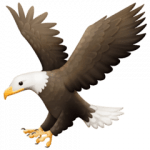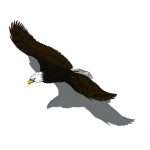By Gussie Fauntleroy
When Daniel Johnson was in Alamosa attending Adams State College in the mid-1970s, he and some friends saw smoke from a wildfire near Zapata Ranch, south of the Great Sand Dunes. So they drove over to see if they could help put it out. They had no firefighting experience, no plan and no equipment. The crew boss handed them hard hats anyway and told them what to do. “The fire was 600 acres but that was huge to me at the time,” Daniel recalled. “I caught the fire bug.”
Fifty years later he’s still fighting wildfires, traveling to major conflagrations and supervising crews as a Task Force Leader, Division Supervisor or Safety Officer certified through the National Wildfire Coordinating Group. In January he accompanied five engine crews from Colorado to the horrific Los Angeles-area fires, where 100-plus-mile-an-hour winds led to the scorching of almost 7,000 structures and more than a dozen deaths.
Witnessing such destruction reinforces Daniel’s longtime passion for helping homeowners in wildland interface areas, where population and fire-vulnerable lands overlap, to help protect homes from the extremes of fire. Since 2009 he has led the Saguache County Firewise program, using county-distributed federal funds to offer free assessments and fire hazard mitigation throughout the county.
What brought Daniel to this point includes a lifelong penchant for physically challenging experiences, a deep love of the natural world and an aversion to workaday jobs. Plus, there’s the hero thing. “I think every little boy and many girls go through a phase where they want to be a firefighter,” he said, adding that a young child imagining being a hero can be an antidote to feeling small and powerless in the world. He believes all firefighters share a strong desire to protect.
Daniel grew up a very shy boy in rural Connecticut, where the woods were his solace and natural habitat. He collected birds’ nests and other forest objects and made small dioramas like those in his favorite museum, the Natural History Museum in New York City. His father, an illustrator, artist and member of the Cowboy Artists of America, often called on his son to serve as a model. As his father researched and painted Western subjects, Daniel also became interested in the West — which later brought him to Colorado.
In high school, competitiveness transformed him into a strong, fit teen, with a vow to stay that way. Competition also taught him an important lesson. While he frequently won in basketball, wrestling and track, he soon realized that winning didn’t make him happy. There was a rush of adrenaline but then always the question: What’s next?
“So I came to Adams State and said okay, I’ll be a hippie,” he said, smiling. Along with growing his hair long, this period included helping people as a psychic healer. “I could feel the energy of the universe showering me. I let it in and focused it,” he said. He was achieving remarkable results, but when he felt his ego becoming too involved, he abandoned that path.
Following graduation Daniel worked a summer on a fire crew based in San Luis, Colorado, attended a Rainbow Gathering in Arizona, hitchhiked to California and spent time commune-jumping before joining an apple-picking crew in Washington. He encountered people completely unlike those in the “white bread little town” of his boyhood. He continued learning about hard work and had magically serendipitous experiences.
Among these was hitchhiking in Montana and accepting a ride from a woman who handed him a book by the Indian philosopher and mystic Rajneesh (Osho). Shortly afterward while visiting his parents, he showed it to his mother and discovered that someone had just given her the same book. Rajneesh’s words, and later being with him in Oregon and India, had a profound impact on Daniel. “It challenged us to go inside and find that kind of Samurai energy. It was hinting at things that can’t be expressed in words,” he said. Through Rajneesh he gained his spiritual name, Shahid, which he continues to use.
Back in Montana, Daniel spent three years with the Helena Interagency Hotshot crew, an elite group of on-the-ground wildland firefighters. He was preparing to visit Rajneesh’s ashram in India when someone drove into the parked van in which he was sleeping and fractured his back. In the moments following the impact, panicked and unable to breathe, he clearly heard Rajneesh’s voice in his mind say, “Do not miss death. Make your life a practice for death.” He relaxed and could breathe again. After months of recovery he continued to India.
In 1989 after his return, Daniel moved to Crestone and lived here 10 years. He volunteered at the Charter School and served on the Baca Grande Property Owners Association (POA). He wrote and acted in plays with the kids and with the POA board and took part in Cabin Fever talent shows. He created handmade puppets with names like Cactus Coyote and Bertrand Beaver and wrote a book for teens. “I’d work 12 hours a day to keep from getting a job,” he quipped.
As soon as his back was strong enough, he returned to firefighting. He served on the Baca Fire Department and traveled to wildland fires around the West. In 2006 he bought 160 acres surrounded by BLM land in the Saguache Mountains and had an off-grid house built. With deep respect for the land — he uses controlled burns to restore native grasses destroyed by decades of overgrazing — he also honors the earlier peoples who hunted there and whose arrowheads he occasionally finds.
When he’s home, he said, “It’s like I’m on retreat all the time. That makes the depth of connection when I’m around people all the more important.” His work with Firewise keeps him in contact with folks he’s known for decades in Crestone-Baca and new people he meets. Meanwhile, firefighting continues to offer an unmatched level of excitement, camaraderie and mutual support. “It helps you through all your life,” he said. “You learn to do what you can with what you have.”
Because of competition for funds, Daniel’s Firewise program received less this winter than requested. He hopes for further funding in the near future. To get on the waiting list for free mitigation, call 719-480-9764. https://saguachecounty.colorado.gov/saguache-county-firewise-program


